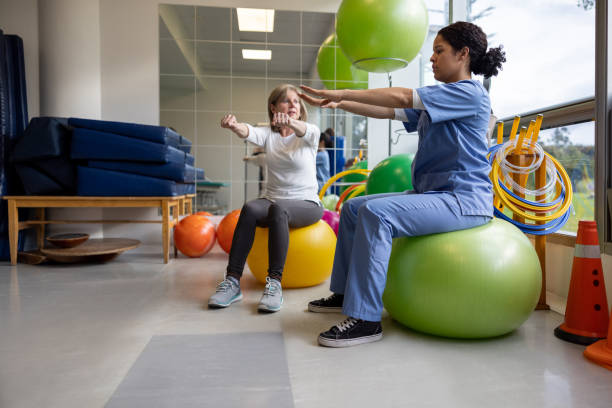Exploring the Different Techniques Used in Occupational Therapy
Have you ever wondered about the various techniques used in occupational therapy, that not only aid in relieving pain but also improve housing and lifestyle? Have you considered how colour theory, ergonomic optimization, and spatial alteration can drastically alter the healing process? Do you wonder how these elements intersect with our daily home and work lives to promote well-being?
The Essential Basics of Occupational Therapy
Occupational therapy is a holistic health science that aids people in overcoming health obstacles in order to live a balanced, enriched life. You might still be puzzled, what role does the design method, or more significantly, the physical setting, play in such a field? The answer lies in purpose.
Let's focus on colour theory, which examines the emotional and physiological impact of specific hues. Imagine suffering from anxiety and being ushered into a vibrantly red room – the colour amplified intensity, confrontational, and agitation might worsen your condition. Now consider being led into a tranquil, soft blue setting. Blue is a soothing colour that encourages calmness and could assist you in managing anxiety.
Further, ergonomic optimization is a strategy that focuses on maximizing efficiency by designing furniture or machines to suit the user's needs. This design element forms a central part of most workplaces to prevent strain injuries, thereby emphasizing comfort and productivity.

How Occupational Therapy Incorporates Interior Design
Have you ever thought about how much our environment impacts our health? The way a room is designed, down to the choice of colour and the selection of furniture, can play a crucial role in the healing process. Such elements form the core of strategies utilized in occupational therapy.
Let's take the case of a wheelchair-bound individual. Simple adjustments such as widening doorways, lowering countertops, or choosing furniture that is accessible to them can significantly impact their quality of life and independence.
Moreover, the colour of the walls and windows' positioning can greatly affect a person's mood. Light and airy colours combined with plenty of natural light can boost productivity and happiness, paramount for those battling mental health issues.
The Harmony of Occupational Therapy and Architecture
Design in occupational therapy isn't solely about colour and furniture. Here's where architecture comes into the picture. Safe, inclusive, and navigable spaces tie into our overall health and wellness.
Imagine living in a building where you had to climb three flights of stairs to reach your apartment. It'd be particularly challenging for the elderly or physically disabled. Incorporating ramps, elevators, or customized facilities promotes independence and integration.
Another architectural feature pertinent to occupational therapy is acoustics. Good architectural acoustics can improve the quality of sleep and reduce stress, creating an overall more pleasant environment.

Discovering the Pros and Cons of Occupational Therapy Techniques
Occupational therapy techniques bear both advantages and disadvantages. On the positive side, these are incredibly adaptable, transformative, and specific to an individual's needs. With carefully chosen colours, ergonomic design, spatial arrangement, and architectural choices, one can significantly enhance daily living and health.
On the flip side, implementing such strategies isn't as straightforward as it seems. It requires skilled professionals, careful planning, and investment, which may not be feasible for everyone. Moreover, what works for one person may not necessarily work for another, requiring constant evaluation and changes.
You Must Watch: Embracing a Clearer Vision The Future of Eye Examinations
Shaping the Future of Occupational Therapy
Drawing from a wealth of research and practical implementation, the techniques used in occupational therapy stand to significantly evolve. With technological advancements like virtual reality, AI, and user-cantered design shaping our lives, the field's future is promising, yet challenging.
Conclusion: Weaving Well-being into the Fabric of Our Lives
Looking at the broader picture, we find that occupational therapy techniques and our daily lives intertwine deeply with our living and working environments, the objects surrounding us, the color of our walls, and the tactile experience of our furniture. Despite the challenges, they offer the potential to shape our lives, promoting not just survival but robust, whole living.
Finally, as we stand on the cusp of a design revolution influenced by emerging technologies, we ought to remember that the principles guiding it should remain rooted in enhancing our health and well-being.






No comments